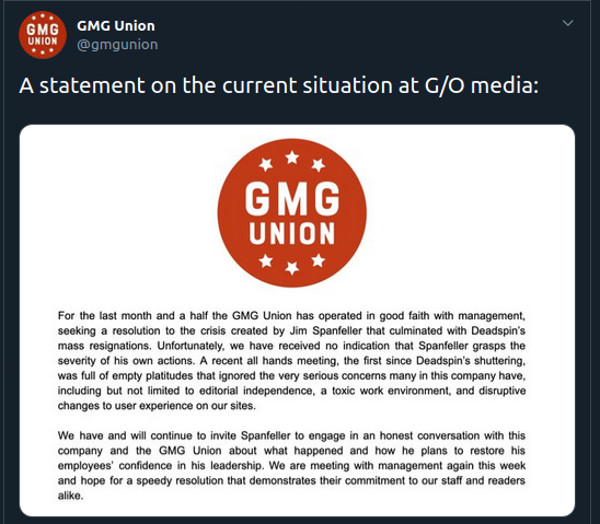
This time, for sure! Ars Technica’s 2020 Deathwatch

Wow, that 2019, though. While we had hopes of a glowing new year as it began, it turns out the glow we saw instead was just the Cherenkov radiation from nuclear-powered Russian doomsday torpedoes. Or perhaps it was the twinkling of the million–dumpster-fire march that 2019 turned into—with some of those dumpster fires lit by the companies we honor here in our 2020 edition of Ars Deathwatch.
Now, it’s time to look forward in anger—well, we’re not really angry, just disappointed, so we’ll say “ennui”—at another new year, as has become our custom. We have taken the pulse of our editors and readers and divined the ashes from all those lovely dumpster fires in an effort to prognosticate the companies, services, and products in the tech world that will lead 2020’s inevitable march into ignominy. And we’re not even going to mention the election cycle, I promise.
First, let’s get our usual disclaimer out of the way: if you’re a first-time Deathwatch player, this is not a prediction of the actual demise of companies or technologies. We know that it takes a lot to actually erase a company or a technology from the face of the Earth these days—after all, many of our previous Deathlisters have emerged from Chapter 11 multiple times before going into Chapter 7. Even the worst ideas and businesses often linger on through inertia or get absorbed by some other company and metastasize in new and horrific ways.
So when we say “Deathwatch,” what we really mean is that we are looking at tech-connected entities facing some (existential or not) economic, cultural, or legal peril. Companies may face challenges that render them irrelevant, cause them to be victims of “cancel culture,” make them technically inconsequential, or render them as chum for sharks of acquisition, litigation, and other forms of business hell.
While these rules are not written in stone, a candidate for the Deathwatch is generally a company or product division of a company that should have experienced at least one of the following:
- An extended period of lost market share in their particular category
- An extended period of financial losses or a pattern of annual losses
- Serious management, legal, or regulatory problems that raise questions about the business model or long-term strategy of the company or product line
There were few actual fatalities on last year’s list, but some are at the point where our staff (I’m looking at you, Ron Amadeo) didn’t think they were even worth mentioning anymore. (I’m sure Essential, the smartphone unicorn that couldn’t, would probably be happy for the attention.) So rather than rehash our other battered survivors (wow, that Facebook management shakeup prediction sure didn’t age well), we’re going to plow right into our fresh list of victims—some of them making return appearances.
Here they are: 2020’s… winners? First up, red-shirted (in reference both to collegiate sports and Star Trek expendables) for 2020: that thing we used to call Oath.
-Sean Gallagher
Verizon Media (aka the Yahoo/AOL division)

Verizon’s Yahoo/AOL division (formerly called “Oath”) was on our Deathwatch list a year ago, and it hasn’t done much of anything to move off death’s doorstep since then. Now called “Verizon Media,” the business unit consisting of former Web giants that lost their mojo years before Verizon bought them, it began and ended 2019 with layoffs. The division had about 11,385 workers at the beginning of 2019 but laid off nearly 1,000 people.
Verizon Media’s Q3 2019 revenue of $1.8 billion was down two percent year over year. Desktop-advertising revenue continues to drop, and mobile ads haven’t grown enough to offset that decline. Verizon insists better days are ahead, with CFO Matt Ellis saying in an earnings call on October 25 that “For the first time, we are seeing mobile traffic increases outpace desktop traffic declines in our core owned and operated products, including sports, finance, news, entertainment, home and mail.” But in an online-ad market dominated by Google and Facebook, Verizon Media seems doomed to remain a bit player at best.
-Jon Brodkin
G/O Media

Ok, we admit: the only things that make G/O Media tech-related are its Gizmodo (formerly flagship) brand and the fact that its publications are delivered by Internet packets. But still, G/O has been a fast-burning, self-immolation machine of a type we haven’t seen since the gasoline fight in Zoolander.
Back when it was Gizmodo Media Group, things were… well, they were really uncertain. Univision purchased Gizmodo and its sister sites after Gawker Media’s disintegration in the wake of the Hulk Hogan lawsuit. But it quickly became apparent that Univision execs had absolutely no idea what to do with what they had bought.
So when in April, (alleged) digital media mogul Jim Spanfeller—previously at Forbes, Ziff Davis, and Playboy—and the private equity firm Great Hill Partners bought Gizmodo, combined the group with The Onion and rechristened it all G/O Media, there was much rejoicing.
Spanfeller promised to return the Web publications to profitability and said there was no need for layoffs or anything. He rebranded the combined sites as “a powerful publishing platform to engage affluent and influential Millennials.” (Ok, boomer.)
Just two weeks after Spanfeller took over, 25 of G/O’s 400 staffers were laid off, including Gizmodo’s editorial director. Spanfeller brought in executives from his previous companies, alienating some staffers because he pushed all the non-white-male leadership out in the process after promising to honor a commitment to diversity. Deadspin ran an article about the growing rancor between staff and management in August.
Shortly thereafter, Deadspin Editor-in-Chief Megan Greenwell quit to take a job at our sister publication Wired after she said she was told to stop non-sports coverage on the site, citing her personal ethics.
New G/O Media Editorial Director Paul Maidment then mandated that Deadspin writers “stick to sports.” They didn’t, and editor Barry Petchesky was fired. Deadspin writers then decided to quit en masse in what might be the most Pyrrhic labor action in recent media history.
The conflict with staff, including the union, has cost G/O revenue in direct ways. Staffers wrote posts asking for reader feedback on an advertising campaign from Farmer’s Insurance that included auto-play videos, and G/O execs ordered the posts pulled down. The staff complained about the stories being pulled in a post by the union Twitter account. Farmers then pulled the $1 million advertising campaign.
The management problems also generated harassment lawsuits by former female executives who said Spanfeller created a hostile work environment for women. Maidment quit. Other execs have fled.
So, instead of putting out a smoldering tire fire, in just eight months Spanfeller’s conflict with the unionized staff has turned G/O Media into a raging inferno fueled by money and careers. Call it a Boomer-Millennial fight if you want; I’m a Gen-Xer, and I’m just here to watch everything burn.
-Sean Gallagher
Similar Posts:
- One tool, many functions: how to better manage your website
- Simple Tips for Buying Christmas Business Gifts
- Top Reasons to Invest in Real Estate Czech Republic
- Sixpack Training – The Surprising Health Benefits of Six Pack Abs Core Muscles
- Easy and personalized, a money account according to AMAAR MANAGEMENT LTD




